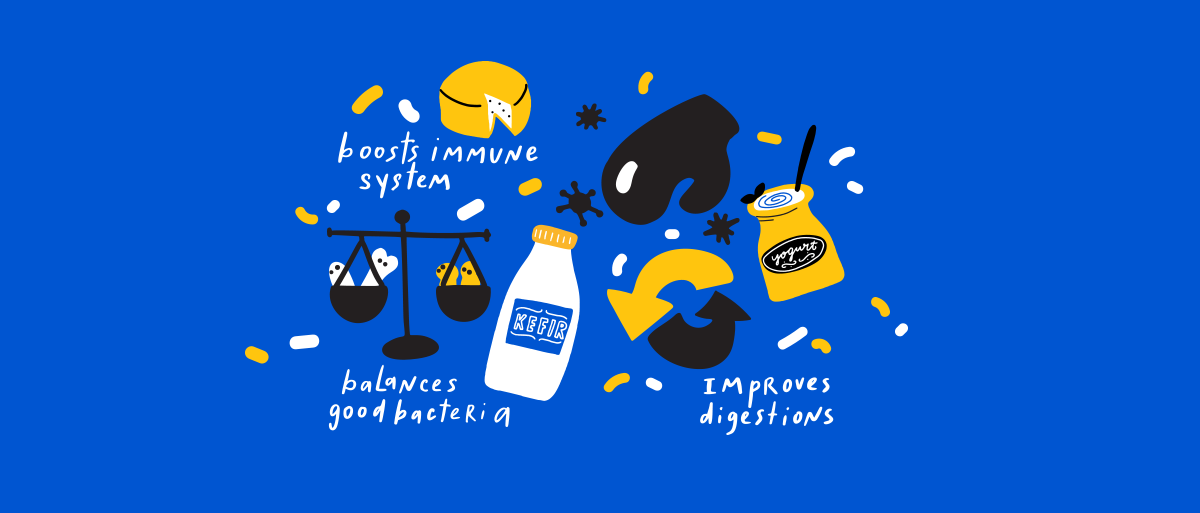It seems like everybody’s been talking about probiotics. Then prebiotics joined the conversation. But what actually are they?
Probiotics are “live microorganisms, which when administered in adequate amounts, confer a health benefit on the host,” according to the United Nations Food Agriculture Organization (FAO) and the World Health Organization (WHO).
In English, that means they are “friendly bacteria,” that are good for you. Some strains of probiotics have been linked with digestive health, while others may benefit the immune system. Traditionally, probiotics are found in fermented foods such as yogurt and cultured milk, but now you can also find them as an added ingredient in milk and cheese.
What do probiotics do for you?
Scientists are still learning about the health benefits associated with eating the right type and levels of probiotics. Research suggests several possible benefits:
- Improves digestion
- Helps restore your natural gut bacteria after you’ve taken antibiotic medicine
- Helps reduce your risk of certain acute common infectious diseases (such as viruses)
- Improves your ability to digest lactose (the sugar in milk)
- Boosts your immune system
Some studies also report that certain probiotics can even help reduce the development of allergies in children, decrease Helicobacter pylori (stuff that commonly causes ulcers) and manage relapse of some inflammatory bowel conditions.
What foods have probiotics?
Several dairy foods make great sources of probiotics:
- Yogurt: The most common source of probiotics. Yogurt can help ease lactose intolerance; this is due in part because some of the lactose is removed through the straining process and also because the active cultures combine with your stomach acid to help digest lactose.
- Soft cheeses: These might be good for your digestion, though not all probiotics can survive the journey through your stomach and intestines. Research has found that certain strains in some fermented soft cheeses, like Gouda, are hardy enough to make it.
- Buttermilk: This is usually milk that's cultured with lactic acid bacteria – and it’s rich in probiotics; delicious to drink or to cook with (buttermilk pancakes, anyone?).
- Kefir: Also a kind of fermented milk, but this time cultured with a type of grain called, you guessed it, kefir. This drink offers three times the probiotics as kombucha!
- Acidophilus milk: Another milk that's been fermented with bacteria, this is sometimes labeled “sweet acidophilus milk.”
- Some types of cottage cheese: So versatile as a snack or a cooking ingredient. Look for “probiotics” or “live and active cultures” on the package.
Other foods with probiotics
Generally, fermented foods have probiotics, though there are exceptions depending on how a food is processed. Generally, you can count on these foods:
- Sauerkraut (fermented cabbage)
- Kimchi (spiced fermented cabbage/vegetables)
- Miso (fermented soybean paste)
- Kombucha (fermented black tea)
What’s the difference between probiotics and prebiotics?
Probiotics are the live, “friendly bacteria.” Prebiotics are the food that probiotics eat; they can help support the probiotics already in your system.
You can find prebiotics in lots of foods, including:
- Asparagus
- Jerusalem artichokes
- Bananas
- Oatmeal
- Red wine
- Honey
- Maple syrup
- Legumes
Ready for some probiotic cooking ideas? Browse our gut-healthy recipes.




